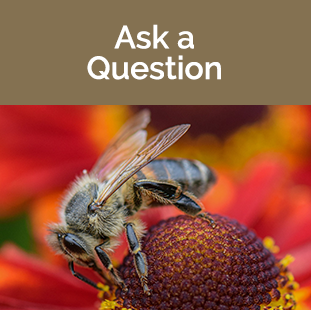Managed Pollinators in Montana
Two kinds of bees are used in agricultural production in Montana: honey bees and alfalfa leafcutting bees (ALCB). Use the links below to find the information you need.
Honey bees (Apis mellifera)
There are currently about 650 registered beekeepers in Montana spanning over four different classifications. The types of registrations are:
- Commercial: Commercial yards must be at least 3 miles from another commercial apiary site operated by a different beekeeper. Commercial yards must also have at least 10 hives present from April 15 - October 15 for 10 consecutive days.
- Landowner: Landowner yards are able to register any number of hives at the location. However, the apiary must be managed by the landowner.
- Hobbyist: A hobbyist yard is defined by a beekeeper who has ten or less hives and may have no more than two apiary locations.
- Pollination: Pollination yards are provisional locations registered for pollination of a specific commercial seed, fruit, or other commercial agricultural product. They are only valid for the specified amount of time that a crop is in peak bloom.
Alfalfa Leafcutting Bees (Megachile rotundata)
There are approximately 35 individuals registered to possess ALCBs in Montana, all of whom are alfalfa seed producers. Alfalfa leafcutting bees are primarily used for the production of alfalfa seed. Yield increases of two to three times are common when enough ALCB are present.
Alfalfa leafcutting bees are a type of solitary bee species - a much different life cycle compared to that of the honey bee. Although each female ALCB constructs her own nest and only tends to her own progeny, this species is gregarious and several thousand nests can be kept in close proximity to one another. These nest structures often look like large sheds and can be seen out in the middle of alfalfa fields across Montana.
The Montana ALCB Program has also provides analytical services to producers in Nevada, Oregon, Washington, and the Dakotas.




